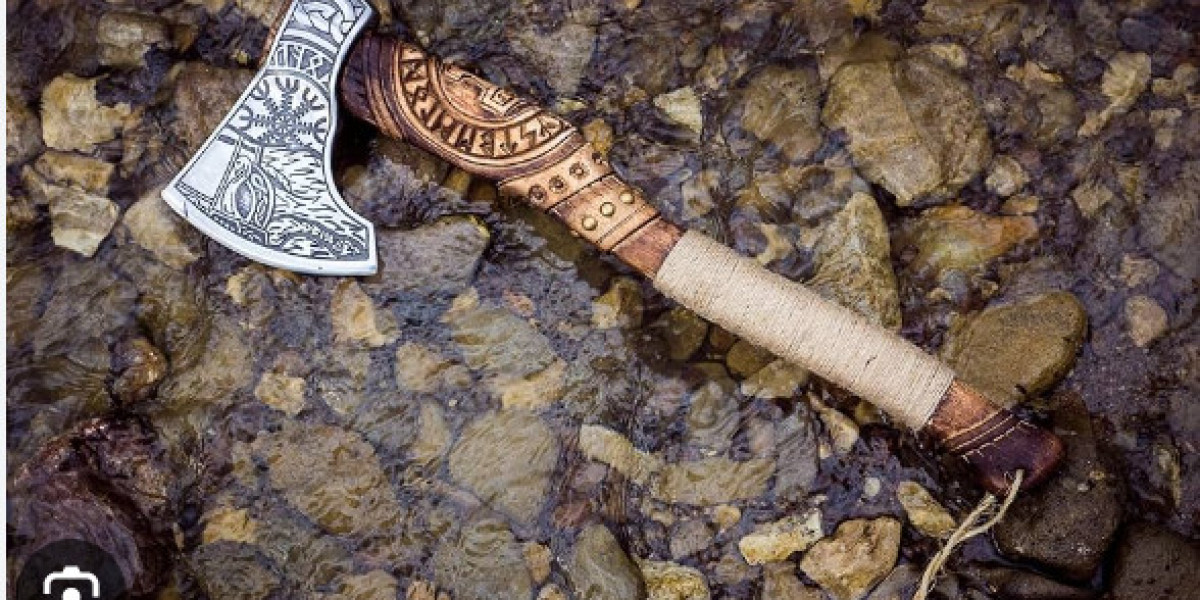The Viking Age, spanning from the late 8th to early 11th century, conjures images of fearless seafarers, skilled warriors, and legendary explorers. However, the Viking lifestyle encompassed much more than their exploits in battle. It was a complex blend of daily routines, societal structures, cultural practices, and survival skills. This article delves into the multifaceted life of the Vikings, highlighting their daily activities, social organization, and the indispensable role of the Viking axe.
Daily Life and Occupations
Viking society was predominantly agrarian, with most people living in rural communities and relying on farming, fishing, and animal husbandry for sustenance.
Farming and Agriculture
Agriculture was the backbone of Viking society. Vikings grew crops such as barley, rye, oats, and vegetables. They raised livestock, including cattle, sheep, pigs, and goats, which provided meat, milk, wool, and leather. Farming was labor-intensive and required the entire family's participation, including children.
Fishing and Hunting
Given their coastal settlements, fishing was a crucial source of food. Vikings fished in rivers, lakes, and seas, catching cod, herring, and other fish. Hunting supplemented their diet with wild game, and they used every part of the animal for food, clothing, and tools.
Craftsmanship and Trade
Vikings were skilled craftsmen, known for their work in metal, wood, and textiles. Blacksmiths produced tools and weapons, including the iconic Viking axe, while carpenters built ships, houses, and furniture. Textile production, mainly handled by women, included weaving wool into cloth for clothing and sails.
Trade was vital to the Viking economy. They traded goods such as furs, amber, and iron, establishing trade networks that spanned Europe, the Middle East, and even North America.
Social Structure
Viking society was hierarchical, with a clear social structure.
The Thralls
At the bottom of the social hierarchy were thralls, or slaves. They were typically prisoners of war or individuals who had fallen into debt. Thralls performed the most labor-intensive tasks and had limited rights but could earn their freedom over time.
The Karls
The majority of the population were karls, or free farmers and craftsmen. They owned land, could bear arms, and had the right to participate in the local assembly, known as the Thing. Karls formed the backbone of Viking society, contributing to agriculture, craftsmanship, and trade.
The Jarls
At the top were the jarls, the noble class. They were wealthy landowners and chieftains who held significant political and military power. Jarls commanded respect and loyalty from their followers and played key roles in leading raids and expeditions.
The Viking Axe: A Symbol of Utility and Power
The Viking axes were an essential tool and weapon in Norse society, embodying the practicality and martial prowess of the Vikings.
Design and Usage
- Bearded Axe: The bearded axe featured an extended lower blade, providing a wide cutting edge while keeping the weight manageable. It was versatile, used for woodworking, daily tasks, and combat.
- Dane Axe: The Dane axe was a large, two-handed weapon with a long handle and a broad blade. It was used by elite warriors in battle, capable of delivering powerful, armor-piercing blows.
- Throwing Axe: Smaller axes designed for throwing, known as franciscas, could be hurled at enemies from a distance, causing significant damage before close combat ensued.
Cultural Significance
The axe was more than just a tool; it was a symbol of strength and status. High-quality viking axe for sale were often intricately decorated, reflecting the owner’s wealth and prestige. In Norse mythology, axes were associated with gods and heroes, further cementing their symbolic importance.
Domestic Life and Culture
Housing
Viking homes, known as longhouses, were rectangular structures made from wood, stone, or turf, with thatched or sod roofs. The interior was divided into living quarters and areas for livestock, with a central hearth for cooking and heating. Longhouses were communal, housing extended families and their animals.
Food and Drink
The Viking diet was varied and hearty. Meals included porridge, bread, fish, meat, and dairy products. Vikings also enjoyed feasts, where they consumed mead, ale, and other alcoholic beverages, often accompanied by storytelling, music, and games.
Clothing
Viking clothing was practical and made from wool, linen, and animal skins. Men wore tunics, trousers, and cloaks, while women wore long dresses with aprons and shawls. Both men and women adorned themselves with jewelry made from bronze, silver, and gold.
Religion and Beliefs
Vikings practiced a polytheistic religion, worshipping gods such as Odin, Thor, and Freyja. They believed in an afterlife, with warriors aspiring to reach Valhalla, Odin’s hall, where they would prepare for the final battle, Ragnarok. Religious practices included rituals, sacrifices, and the veneration of sacred sites.
Conclusion
The Viking lifestyle was a blend of rugged survival, intricate craftsmanship, and rich cultural practices. Their daily lives were shaped by the need to thrive in a harsh environment, while their social structure ensured the efficient functioning of their communities. The Viking axe, a symbol of their practicality and martial spirit, played a central role in their existence. Through their resilience, ingenuity, and adventurous spirit, the Vikings left an indelible mark on history, influencing cultures far beyond their Scandinavian homelands.



